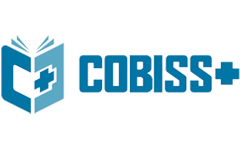Chatbots in Malaysia –A Balanced Scorecard Approach
DOI:
https://doi.org/10.61841/me0txq79Keywords:
Chatbots, Balanced Scorecard, Financial Performance, Stakeholder, Internal Process, Learning and Growth, Adoption, Technology AdvancementAbstract
This research provides an insight of the adoption of chatbots among businesses in Malaysia. With technological advancements, there has been a growth in the adoption of chatbots by firms. Businesses and individuals are more receptive towards the idea of using chatbots as their communication and service tool for basic or repetitive information. However, since it is still at an initial stage, assessing the impact of the chatbot adoption may not be prevalent in terms of financial performance only. Hence, this research uses the Balanced Scorecard angle of assessing the non-financial angles (Stakeholders, Internal Process and Learning & Growth) against the Financial Performance of a firm. Questionnaires were sent out to Malaysian firms to assess their experience with the chatbot adoption. The results reflected a positive attitude from stakeholders towards the firms adoption of chatbots. It also highlighted that key decisions and information pertaining towards the decision to adopt chatbots may not have been strongly discussed with shareholders or with the support of directors. It also revealed that due to the chatbot implementation still being at an infancy stage, key impacts towards employees such as unemployment or retraining was not yet worrying. Overall, the performance was perceived to have improved after the implementation of chatbots in the firm, though certain areas of improvements were also highlighted
Downloads
References
1. Alaimo, D., 2018. Chatbots To Talk Up %11B in Cost Saving By 2023. [Online]
Available at: https://www.retaildive.com/news/chatbots-to-talk-up-11b-in-cost-savings-by-2023/527125/
[Accessed 23 January 2019].
2. Ayoup, H., Omar, N. & Rahman, I. K. A., 2016. Balanced Scorecard and Strategic Alignment: A Malaysian
Case. International Journal of Economics and Financial Issues, 6(4), pp. 85-95.
3. Belton, P., 2019. Would You Be Happy To See Your Doctor Online. [Online]
Availableat: https://www.bbc.com/news/business-47196286[Accessed 13 February 2019].
4. Bourne, V., 2018. LogMeIn 2018 AI Customer Experience Report: Impact Of Chatbots And AI On The
Customer Journey, UK: OVUM.
5. Cai, J. D. & Chua, C. K., 2018. IDC Asia/Pacific (Excluding Japan) Artificial Intelligence Enterprise
Adoption Survey 2018, Farmingham : IDC.
6. Casey, W. & Peck, W., 2004. A Balanced View of Balanced Scorecard. The Leadership Lighthouse Series:
White Paper, pp. 1-7.
7. Damdharan, R. &Afsal, M., 2018. AI Is Not For Me...Think Again. [Online] Available at: https://www.thestar.com.my/business/smebiz/2018/12/24/ai-is-not-for-me-think-again/ [Accessed 13 January 2019].
8. Debecker, A., 2017. Chatbot Tay: Story Of A PR Disaster. [Online] Available at: https://blog.ubisend.com/discover-chatbots/chatbot-tay [Accessed 24 January 2019].
9. Dilla, W. N. &Steinbart, P. J., 2005. Relative Weighting of Common and Unique Balanced Scorecard Measures by Knowledgeable Decision Makers. Behavioral Research in Accounting, 17(1), pp. 43-53.
10. Eisenberg, P., 2016. The Balanced Scorecard and Beyond - Applying Theories of Performance Measurement, Employement and Reward in Management Accounting Education. International Research Journal Of Management Sciences, 4(7), pp. 483-491.
11. Fitzgerald, L., 2007. Management Performance Measurement in Service Business. International Journal Of
Operation & Production Management , 8(3), pp. 34-36.
12. Goebel, T., 2018. Google Duplex’s Conversational AI Shows A Path to Better Customer Service. [Online]
Available at: https://www.cmswire.com/customer-experience/google-duplexs-conversational-ai-shows-apath-to-better-customer-service/
[Accessed 30th January 2019].
13. Heath, N., 2018. AI And Jobs: Retraining Will Become A 'Lifelong Necessity. [Online]
Available at: https://www.techrepublic.com/article/ai-and-jobs-retraining-will-become-a-lifelong-necessitywarns-report/
[Accessed 17 February 2019].
14. Kaneshige, T. & Hong, D., 2018. This Is The Year To Invest In Humans, As Backlash Against Chatbots And
AI Begins. [Online] Available at: https://www.forbes.com/sites/forrester/2018/11/29/this-is-the-year-toinvest-in-humans-as-backlash-against-chatbots-and-ai-begins/#64916d2b48aa
[Accessed 24 January 2018].
15. Kaplan, R. & Norton, D., 2002. The Strategy-Focused Organization: How Balanced Scorecard Companies
Thrive In The New Business Environment. Internal Auditor, 59(1), pp. 33-59.
16. Kaplan, R. S., 2010. COnceptual Foundations Of The Balanced Scorecard. Harvard Business School Working
Paper, 10(74), p. 3.
17. Kappel, M., 2017. 6 Ways To Measure Small Business Success. [Online] Available at:
https://www.forbes.com/sites/mikekappel/2017/03/08/6-ways-to-measuresmallbusinesssuccess/#36f1b9f618f4[Accessed 24 January 2019].
18. Lashbrooke, B., 2017. How Technological Advancement Translate To Entrepreneurial Success. [Online]
Available at: https://www.bizjournals.com/bizjournals/how-to/technology/2016/07/technologicaladvancements-entrepreneurial-success.html[Accessed 24 January 2019].
19. Liu, Y., 2017. The Accountability of AI — Case Study: Microsoft’s Tay Experiment. [Online]
Available at: https://chatbotslife.com/the-accountability-of-ai-case-study-microsofts-tay-experimentad577015181fMalagwi, A. A. &Dahiru, H., 2014. Balanced Scorecard Financial Measurement Of
Organizational Performance: A Review. Journal Of Economics And Finance , 4(6), pp. 1-10.
20. Matzler, K., Fuchs, M. & Schubert, A. K., 2004. Employee Satisfaction: Does Kano's Model Apply. Total
Quality Management, 15(9), pp. 1179-1198.
21. Meyer, M. W., 2002. Rethinking Performance Measurement: Beyond The Balanced Scorecard. Cambridge
University Press, pp. 81-113.
22. Noordin, K. A., 2017. The Edge SME Forum 2017: The Rise Of The Chatbots. [Online]
Available at: https://www.theedgemarkets.com/article/edge-sme-forum-2017-rise-chatbots[Accessed
24January 2019].
23. Orlowski, A., 2017. Facebook Scale Back AI Flagship After Chatbots Hit 70% Failure Rate. [Online]
Available at: https://www.theregister.co.uk/2017/02/22/facebook_ai_fail/[Accessed 24 January 2019].
24. Panko, R., 2019. Google Duplex: Inside Google’s Latest Voice Technology and What It Means For AI.
[Online]
Available at: https://www.techiexpert.com/google-duplex-inside-googles-latest-voice-technology-and-whatit-means-for-ai/[Accessed 28 January 2019].
25. Parlo, 2016. Tommy Hilfiger Bot: Artificial Intelligence Gone Wrong. [Online]
Available at: https://chatbotslife.com/tommy-hilfiger-bot-artificial-intelligence-gone-wrong-90a545ac9a20
[Accessed 24 January 2019].
26. Piccolo, L. S., Roberts, S., Losif, A. & Alani, H., 2018. Designing Chatbots for Crises: A Case Study
Contrasting Potential and Reality. Proceeding of British HCI Conference , pp. 1-10.
27. Ram, A. & Neville, S., 2018. High-profile Health App Under Scrutiny After Doctors' Complaints. [Online]
Available at: https://www.ft.com/content/19dc6b7e-8529-11e8-96dd-fa565ec55929[Accessed 24 January
2019].
28. Ratcheve, V. S. & Leopold, T., 2018. 5 Things To Know About The Future Of Jobs. [Online]
Available at: www.weforurm.org/agenda/2018/09/future-of-jobs-2018-things-to-know
[Accessed 10 February 2019].
29. Reddy, T., 2017. How Chatbots Can Help Reduce Customer Service Cost By 30%. [Online]
Available at: https://www.ibm.com/blogs/watson/2017/10/how-chatbots-reduce-customer-service-costs-by-
30-percent/[Accessed 9 January 2019].
30. Research, G. V., 2017. Chatbot Market Size To Reach $1.25 Billion By 2025 | CAGR: 24.3, California :s.n.
31. Roe, D., 2019. AI Adoption is Increasing But Challenges Remain. [Online]
Available at: https://www.cmswire.com/digital-workplace/ai-adoption-is-increasing-but-challenges-remain/
[Accessed 12 February 2019].
32. Rosenblatt, G., 2016. How The Chatbot Changes Our Relationship With Organizations. [Online]
Available at: https://www.the-vital-edge.com/chatbot-organizations/[Accessed 24th January 2019].
33. Slovic, P. &MacPhillamy, D., 1974. Dimensional Commensurability And Cue Utilisation In Comparative
Judgement. Organizational Behavior and Human Performance , 11(2), pp. 172-194.
34. Wall, M., 2018. Adapt Or Die: How To Cope When The Bots Take Your Jobs. [Online]
Available at: https://www.bbc.com/news/business-43259906[Accessed 17 January 2019].
35. Wunderlich, N. &Paluch, S., 2017. A Nice and Friendly Chat with a Bot: User Perceptions of AI-Based
Service Agents. ICIS, 3(2), pp. 2-10.
36. Xiaofeng, W., 2017. Why AI-Based Chatbots Are Failing Worldwide. [Online] Available at:
https://tech.economictimes.indiatimes.com/news/technology/why-ai-based-chatbots-arefailingworldwide/58944087 [Accessed 24 January 2019].
Downloads
Published
Issue
Section
License
Copyright (c) 2020 AUTHOR

This work is licensed under a Creative Commons Attribution 4.0 International License.
You are free to:
- Share — copy and redistribute the material in any medium or format for any purpose, even commercially.
- Adapt — remix, transform, and build upon the material for any purpose, even commercially.
- The licensor cannot revoke these freedoms as long as you follow the license terms.
Under the following terms:
- Attribution — You must give appropriate credit , provide a link to the license, and indicate if changes were made . You may do so in any reasonable manner, but not in any way that suggests the licensor endorses you or your use.
- No additional restrictions — You may not apply legal terms or technological measures that legally restrict others from doing anything the license permits.
Notices:
You do not have to comply with the license for elements of the material in the public domain or where your use is permitted by an applicable exception or limitation .
No warranties are given. The license may not give you all of the permissions necessary for your intended use. For example, other rights such as publicity, privacy, or moral rights may limit how you use the material.
















